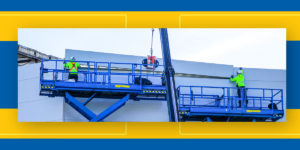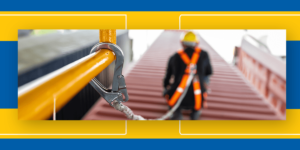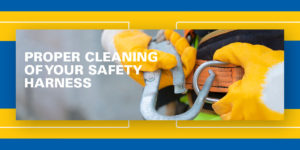Fall Protection Forum
Recent Posts
October 22, 2025
Do You Need Fall Protection on a Scissor Lift?
With their ability to elevate workers vertically and transport them to different…
October 22, 2025
Can an Overhead Crane Hook Be Used as an Anchor Point?
One question we hear occasionally is whether workers can tie off to a crane hook for personal fall protection when no other anchorage is available. The answer is somewhat more complicated than a simple yes or no. In some instances, OSHA permits workers to use a crane hook as an anchor point, but…
October 22, 2025
Do Fall Protection Harnesses Expire?
A fall protection harness is a safety harness that connects a worker…
September 23, 2025
Proper Cleaning of Your Safety Harness
A worker’s full-body harness is an integral element of fall protection systems….
July 24, 2025
Maximum Arresting Force
Maximum arresting force (MAF) plays an important role in the safety of…
June 20, 2025
Fall Protection for Icy Conditions
Cold Weather Safety When winter sets in, it doesn’t just introduce freezing…
May 19, 2025
ANSI Z359.2: Training for Authorized Rescuer vs. Competent Rescuer
As workplace falls increase in industrial and construction facilities, more employers are installing fall protection systems. While many employers will…
May 1, 2025
What is ANSI?
The American National Standards Institute, or ANSI, is an independent, non-profit agency that oversees the development of voluntary consensus standards for various industries. The agency works to ensure consistency and safety, as well as to assure worldwide acceptance of common standards, applicability, and terminology. ANSI also accredits standards developed by…
April 28, 2025
Understanding Suspension Trauma
Let’s look at suspension trauma, also known as harness trauma. Very simply stated, suspension trauma is injury or death caused by blood flow restriction while hanging suspended in a harness waiting for rescue assistance. This is why self rescue is so important. As required by OSHA law: 1910… So let’s…
April 25, 2025
What is Galvanization?
Here at Rigid Lifelines™ we frequently recommend that customers have their fall…
April 25, 2025
What Are Swing Falls and How Do They Occur
Swing falls in the industrial work place can result in significant injuries…
April 17, 2025
Passive vs. Active Fall Protection
Falls are serious hazards, especially in environments where workers perform their duties…









